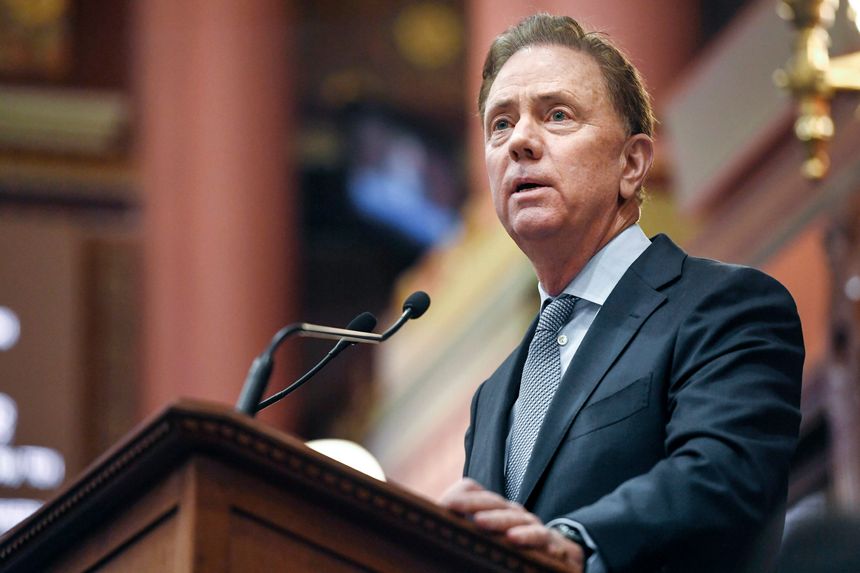
Governor Lamont claims to be engineering the Connecticut Comeback. Not so fast. Immediately before he first took office in 2018, the state’s long-term debt was $83.4 billion. The latest state financial statements show $87.2 billion. The state is $3.8 billion deeper in debt.
Lamont claims to have improved the health of the drastically underfunded state employee pension fund (SERS) with $5.0 billion of special deposits to the fund. In 2018, SERS unfunded liability was $21.2 billion; last June 30th, it was $20.1 billion, indicating a meager improvement of $1.1 billion.
What happened?
Lamont agreed to an outrageously expensive wage agreement with the state employee labor union coalition (SEBAC). That’s what happened. The SEBAC 2022 agreement increased future pension costs by $4.5 billion, or 11%, according to a study commissioned by Nutmeg Research Initiative and conducted by The Townsend Group, which I head.
Townsend also looked at SEBAC 2022’s impact on annual state labor costs. We analyzed publicly available data from the OpenCT database maintained by the State Comptroller. We found that SEBAC 2022 has increased state labor costs to a current annual running rate of $8.5 billion, a level $836 million, or 11%, higher than costs in fiscal 2021 immediately before SEBAC 2022 took effect.
According to the Office of Financial Analysis, SEBAC 2022 awarded pay boosts (wage raises and annual increments) of about 4.5% in fiscal years 2022, 2023 and 2024 that cumulate to a whopping 14% compound increase. Wages for fiscal 2025 are under current negotiation.
Arguably, the actual 11% wage increase should have been more modest, since SEBAC 2022 triggered 2.6 times the normal number of retirements. This alone would reduce compensation costs as retiring high-paid senior employees are replaced by lower-paid entry level employees.
Not included in the current running rate of compensation are $3,500 in one-time pensionable bonuses that Lamont paid all state workers in summer 2022. While not captured in current compensation, these pensionable bonuses are a part of SERS future pension liability and its $4.5 billion surge. Lamont paid $2,500 in bonuses just before the July 1, 2022 effective date for retirement benefit reductions for retirements thereafter. Employees banked the bonuses, retired before the effective date and avoided the reductions. This further increased SERS unfunded liability.
The special deposits to SERS should have significantly bolstered the pension fund, but the overcompensation of state employees via SEBAC 2022 has negated their impact.
Essentially, the special deposits have subsidized huge wage gains for state employees.
To assess the impact of SEBAC 2022 upon SERS unfunded pension liability, Townsend compared three actuarial reports from the state’s actuaries, Cavanaugh MacDonald. First, Townsend compared the Valuation Report as of June 2021 just before SEBAC 2022 to the Valuation Report one year later which was released in December 2022 once the full dimensions of the massive wave of state employee retirements triggered by SEBAC 2022 were known.
The comparison showed an unexpected decrease of $1.5 billion from 2021 to 2022. Many new retirees drawing benefit payments would increase the unfunded liability.
The third CavMac report revealed the reason for the unexpected decrease, namely an estimated $2.8 billion special deposit to SERS triggered by the “fiscal guardrails,” specifically the Volatility Cap Transfer. The report showed that the deposit alone decreased the unfunded liability by $5.8 billion ($2.8 billion earning at 6.9% to 2048). Ultimately the deposit was $3.2 billion, which reduced the liability by $6.75 billion, according to Townsend’s adjustment of the CavMac analysis.
Without the $6.75 billion from the special deposit, the unfunded liability would have increased by $5.25 billion, an effect predominantly attributable to SEBAC 2022. Note, after adjusting for timing differences, Townsend found that increase to be $4.5 billion.
In 2022, Lamont defended the generosity of the agreement by saying he needed to recruit “the best and the brightest.” Yet, his deal with labor encouraged a massive wave of retirements of the state’s most experienced staff, arguably its “best and brightest.”
Compensation of Connecticut state employees ranks consistently among the five most generous of the fifty states, while the funding of retiree pension and health care benefits ranks consistently in the bottom five. Connecticut simply cannot afford such generous and underfunded pay and benefits for state employees. Nor are they fair. Pay and benefits equivalent to national averages would be prudent and fair.
Lamont is negotiating wages for fiscal 2025, the fourth year of SEBAC 2022. He caved to SEBAC in 2022. Now, he needs to show some spine and refuse any wage increase.
Some Democrats want to weaken the fiscal guardrails. Rightfully, Lamont is resisting. But the guardrails predate Lamont. On his watch, he has wasted all the savings from the guardrails to fatten the wallets of his union allies. That has to stop. Otherwise there will be no improvement in the SERS pension fund, nor any reduction in the state’s massive debt load.
![]()
Red Jahncke is a nationally recognized columnist, who writes about politics and policy. His columns appear in numerous national publications, such as The Wall Street Journal, Bloomberg, USA Today, The Hill, Issues & Insights and National Review as well as many Connecticut newspapers.





